International News
Bangladesh-India Partnership: A Bastion of Regional Stability in South Asia
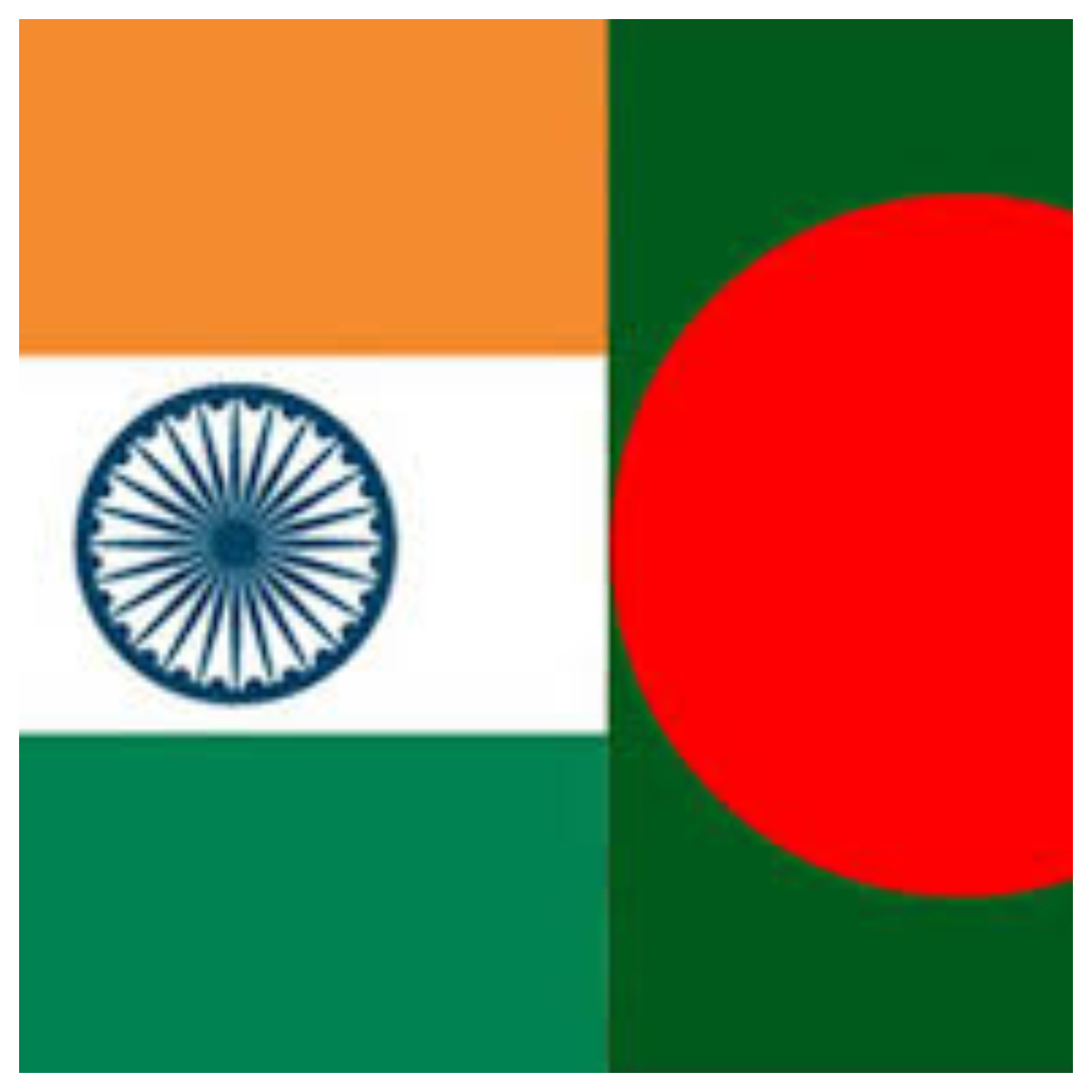
India was one of the first countries to establish bilateral diplomatic ties with Bangladesh. With the recognition of independence of Bangladesh on December 6, 1971, this relation was born out of Bangladesh’s liberation struggle against the oppressive force of Pakistan.
The year 2021 marks the glorious 50th anniversary of diplomatic relations between both states which is also the golden jubilee of Bangladesh’s independence from Pakistan.
Bangladesh and India celebrate their tremendous efforts of being ‘trusted friends’ over the years. Both the countries decided to commemorate December 6 as ‘Maitri Diwas’ (Friendship Day) during the visit of Indian Prime Minister Modi on the occasion of golden jubilee of Bangladesh in March 2021. The bilateral partnership has flourished every aspect of cooperation from trade to energy, security to connectivity. The magnitude of friendship and partnership between Bangladesh India over the past decade has contributed to a paradigm shift in their bilateral relations. Many analysts term the relationship as a model for other countries in South Asia and beyond.
Bangladesh and India share a 4,096 km-long international border, the fifth-longest land border in the world, being the neighbouring state and the liberation wartime ally, Bangladesh considers bond with India is inscribed in blood, which is hard to shake. However, this bond faced strategic changes with the regime change in Bangladesh started from 1975 after the assassination of Father of the Nation, Bangabandhu Sheikh Mujibur Rahman, as the period before that was known as ‘honeymoon period’ (1971-1975) of the relations.
After that, Bangladesh experienced military regimes which ended the honeymoon period. During the period of the Bangladesh Nationalist Party (BNP) in 2001, the relations further took a downturn due to its anti-India posturing. Later, it started to improve when Sheikh Hasina led- Awami League government came to power.
In 2010, Hasina visited New Delhi to build a ‘stable and fruitful relationship’, and both the nations sought to address cross-border terrorism and India’s connectivity with Bangladesh through the northeast region. In a joint communique, the two Prime Ministers shared vision for the future which would include cooperation in water resources, power, transportation, connectivity, tourism, and education. Later on in 2013, a credit line of $800 million was extended by the Manmohan Singh government and ‘Maitreyi express’ was revived between Kolkata and Dhaka that operationalises the bus services in these routes.
In 2017, Sheikh Hasina visited New Delhi and the result was dozens of agreements being signed concerning trade, transport, energy as well as counterterrorism. The bilateral trade of India with Bangladesh steadily improved over the years, as it was about $6 billion in 2015-16 and crossed the landmark $10 billion in 2018-19. Hence, trade relations strengthened between the two nations and Bangladesh is India’s largest trading partner in South Asia with the total bilateral trade between the two nations standing at $9.5 billion in 2019-20.
Not only economic ties, but also India’s shared cooperation with Bangladesh in the areas of security, counter-terrorism, anti-radicalisation, energy, advanced tech, ecology, vaccines would contribute largely in the South Asian regional stability. South Asian region is at cross-roads due to a new geopolitical landscape, looming economic crisis, and security challenges triggered by Afghanistan situation, Pakistan crisis and Sri Lanka crisis. The impact of the Ukraine War, threats of terrorism and radicalization and bilateral conflicts has further caused regional instability in South Asia. In this context, bilateral partnership between Bangladesh and India is critical from a regional perspective.
Bangladesh-India Partnership: An Epitome of Regional Cooperation
Undoubtedly, in South Asia, the partnership that exists between Bangladesh and India is an exemplary one. Starting from the trade partnership to security cooperation, both the countries enjoy the support of each other and can negotiate in areas like land boundary, connectivity, trade deficits, water problem and maritime disputes. Bangladesh and India enjoy benefits from bilateral cooperation in a win-win situation in the areas of economy, security, trade, ports, energy, investment, social links, and transit issues.
Economic Cooperation
Both Bangladesh and India consider each other as one of the vital trading partners. India is the second largest trade partner of Bangladesh. Bangladesh’s share in India’s export increased from 1.4 per cent in 2010 to 3.5 per cent in 2021. India’s share in Bangladesh’s goods exports stood at 3.3 per cent. Being part of South Asian Free Trade Area (SAFTA), both the countries get preferential treatments in case of tariff concessions in their respective markets. Bangladesh is by far the largest trading partner for India in South Asia, which portrays the positive economic cooperation that exists between both states. This cooperation is significant in a region like South Asia to deepen mutual understanding that would develop the region gradually as an integrated, secured and self-sufficient unit.
Security Relations
The security and military ties of the two countries were established in 1971 during the glorious days of Liberation War of Bangladesh when India actively provided its military support. The partnership between the two nations pioneered extraordinary level of security cooperation during the Bangabandhu government, 1972-1975 which discontinued with the tragedy of assassination of Bangabandhu on August 15, 1975. The security cooperation revived based on mutual understand during the Sheikh Hasina government first in 1996-2001 and then 2009-present.
In 2015, during Prime Minister Modi’s visit to Bangladesh, both the countries agreed on joint coast guards in view of combating piracy and enhancing maritime security in the Bay of Bengal region.
Hasina and Modi held a dialogue on “regional security and cooperation in combating international terrorism.” Both countries’ higher officials signed a variety of agreement including cyber security, defence, connectivity, energy, and a civil nuclear cooperation.
The signing of memorandum of understanding (MoU) on defence cooperation during the visit of Prime Minister Sheikh Hasina to New Delhi in 2017 is another milestone in security cooperation. These agreements are not only crucial to maintain bilateral peace but also required for maintaining regional stability in South Asia. As Pakistan in the region is more known to support and breed terrorism, terrorist activities, a stronger Bangladesh-India military cooperation would strengthen their security by countering any military or terrorist threats.
Recent Developments in their Relations
In June 2015, Premiers of both countries implemented the long awaited ‘Land Boundary Agreement’ and settled boundary disputes, hence 50,000 people living in the border enclaves received their identity. This agreement was termed ‘historic milestone’. The disputed land areas were source of human trafficking, illicit migration, smuggling, hubs of terrorists, which were overall a threat for regional stability. With the combined efforts of Bangladesh and India, a proper solution was made.
The maritime boundary dispute in the Bay of Bengal between Bangladesh and India were solved in 2014. The resolution of the dispute was a win-win arrangement for both the countries. Bangladesh is also a part of BBIN (Bangladesh, Bhutan, India, Nepal), a sub-regional initiative that is motivated to improve connectivity and economic development among the member states.
Though the regional initiatives in South Asia gained less traction previously, still India proposed this multilateral initiative with the intention of strategic connection and cooperation where Bangladesh plays a significant role. An agreement in the sector of connectivity would ease channels for carrying trade across these states. India’s core foreign policy focus on the ‘Neighbourhood First’ reminds them to connect neighbouring states, Bangladesh-India relation is an example of this and it leverages the entire region as a whole.
The proposed Comprehensive Economic Partnership Agreement (CEPA) between the two nations is one of the agreements that both the countries are prioritizing. In March 2021, two states agreed to enhance trade under this agreement with a need for the removal of non-tariff barriers, need for predictability of trade policies, regulations and procedures. This is mutually beneficial for a rising economy like Bangladesh and a prospering India, which sets a ‘benchmark of relation’ in South Asia, that overall contributes in a stable regional progress.
Leading to the Regional Stability in South Asia
South Asian region had been more contentious in terms of regional cooperation and stability, than any other regions in the world. A region having two arch-rivals India and Pakistan on one hand and the other smaller economies like Nepal, Bhutan on the other hand makes it difficult for consensus building, policy preparations.
Hence, to succeed initiatives like BBIN and BIMSTEC, bilateral cooperation between Bangladesh and India would strengthen regional integrity in terms of economic, connectivity, security and socio-cultural issues. To revive the historical economic connections, eight Border Haats have been set along Bangladesh’s borders with Meghalaya and Tripura. Indian concern about using Bangladesh territory as a base by the insurgent groups of its North-eastern states, was largely mitigated by the stern actions taken by Sheikh Hasina government in Bangladesh. The Hasina government also increased border monitoring to arrest any smuggling efforts for the insurgents in the Northeastern states of India. With these actions from Bangladesh, terrorism, smuggling, human trafficking, arms trade came to a check across the borders that not only serve these two states but also security concerns of the region. Hence, it’s an example for other neighbouring states to build a win-win advantageous bilateral relations based on trust and collaboration to advance the vision of a stable South Asia.
With such a bonhomie, scholars argue the ‘honeymoon period has returned’ for Bangladesh-India, which is actually a fact. In terms of connectivity, energy sectors, investments in Bangladesh initially in the garments, textiles and telecom sectors and are now expanding steadily into the power and infrastructure, Bangladesh government also allocated a special economic zone in the country for Indian entrepreneurs. These advancements crafted the pathway for deep bilateral engagements, sub-regional progress through BIMSTEC, BBIN which would contribute to the regional stability.
Finally, the relation between Bangladesh and India is time tested, a bond that is built with the struggles and blood. Bangladesh, particularly the current government of Sheikh Hasina is maintaining a deeper tie with their neighbours state India, which now reached a new height in terms of economic, security, energy, connectivity, bilateral and sub-regional cooperation. There are also new sectors of cooperation between the two countries, and they already revived the ‘golden era’ of friendship.
From a South Asian regional perspective, the domino effect of this partnership or relation is positively felt by the other neighbouring states, eventually the whole region marked by stability and peace. This partnership is thus, works more as a bastion of equilibrium, balance and stability in the construction of a peaceful region through negating terrorism, cross-border arms trade, human trafficking, smuggling, and insurgent activities. More the countries learn from the exemplary and celebrated Bangladesh-India partnership in the South Asian region, better they would be able to reciprocate and act on it to create an integrated stable region.
Crime
As drug net tightens, ISI and D-Syndicate push massive fake currency surge
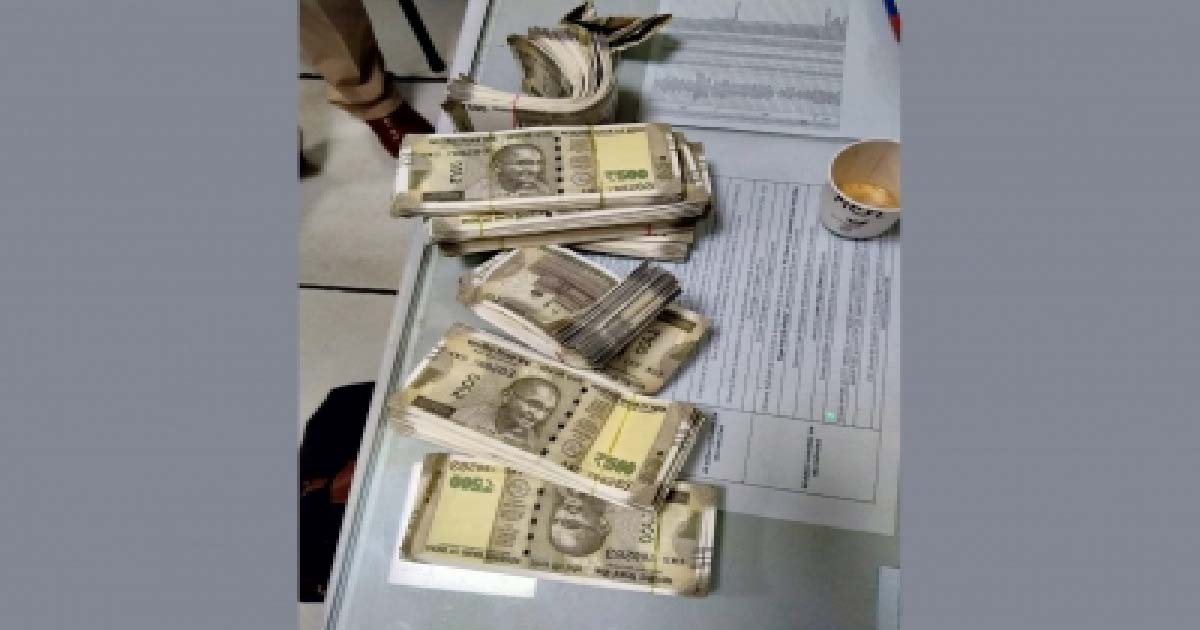
New Delhi, Dec 10: With the Indian agencies cracking down heavily on the narcotics trade, Intelligence Bureau officials have warned about an uptick in the smuggling of fake currency notes. In the past two weeks, several operations have been carried out in various parts of the country in which fake currency rackets have been busted.
The fake currency mafia is controlled by the Dawood Ibrahim syndicate, which is based in Pakistan. While the syndicate is trying to find newer routes and partners to further the narcotics trade, it is also stepping up operations relating to fake Indian currency. The ISI needs funds to resurrect its terror groups, which were largely beaten down during Operation Sindoor.
The fake currency racket had taken a slight backseat for some years, but now there are full-fledged plans to resume operations on a very large scale. Malda in West Bengal remains the main hub for this racket in India. Now with an unfriendly regime in place in Bangladesh, the ISI sees an opportunity to scale up operations.
All the fake currency that is being printed in Pakistan is first routed into Bangladesh. The ISI finds no problem in routing fake notes into Bangladesh, as Islamabad and Dhaka have close ties today. The sea route has been opened up, and the visa process is much simpler for Pakistanis, and this is being taken advantage of by the ISI.
From Bangladesh, the operatives push the fake currency into Malda, following which it is circulated across the country. Officials report that apart from West Bengal, mini modules have been set up in various parts of the country. The notes are transported either from Malda or Murshidabad in West Bengal to the rest of the country.
An official said there has been an increase in such cases, as the ISI and D-Syndicate are pushing it massively. There is a desperate need for funds as the ISI is not only trying to revive terror groups in Pakistan, but is also creating another front in Bangladesh. It wants to engage India on both fronts, and hence the simultaneous push is being made, the official explained.
These gangs operating the racket in India have been coming up with various ways to push fake notes into the market. In Gujarat, a gang that was running a money-doubling scam was busted. It was found that victims were lured into the scheme, and they were given fake Indian currency. This gang was operating mainly in Gujarat and Maharashtra, the probe has revealed.
While the Bangladesh-West Bengal route is the primary one for this racket, there is also a fresh push to smuggle these notes through the UAE into Kerala. Over the years, Kasargod in Kerala has become a major hub for smuggling fake currency notes.
M.B. Moosa, Abdul Rahman, K.M. Hamza, Kallatra Abdul Ha Khader Haji, Irabhim Soopi, K.S. Abdullah, and Kadavath Atta are the ones who have been running this racket. The notes from Pakistan would reach these persons through the UAE route.
Officials say that the Kerala route is one of the hardest to control. There is a huge rush at the airports owing to the number of people visiting the Gulf nations. The ISI has taken advantage of the stress on the security mechanism at these airports in Kerala. Most of the time, these persons get away because the customs formations are understaffed. This makes checking everyone difficult.
Further, the detection has also become very difficult owing to the quality of the notes that are being printed. An Intelligence Bureau official said that the notes are printed in government printing presses in Lahore, Karachi, Quetta, Multan, and Peshawar. These are the same places where the official Pakistani Rupee is also printed. Hence, the quality of the Indian notes being printed in Pakistan is of very superior quality, and this is making detection a challenge, the officer explained.
The gravity of the problem in India, courtesy this fresh push by Dawood and the ISI, can be seen in a report published by the US State Department. “India faces an increasing inflow of high-quality counterfeit currency, which is produced primarily in Pakistan but smuggled to India through multiple international routes. Criminal networks exchange counterfeit currency for genuine notes, which not only facilitates money laundering but also represents a threat to the Indian economy,” the report says.
Business
India-Russia friendship steady like pole star amid global uncertainty: PM Modi
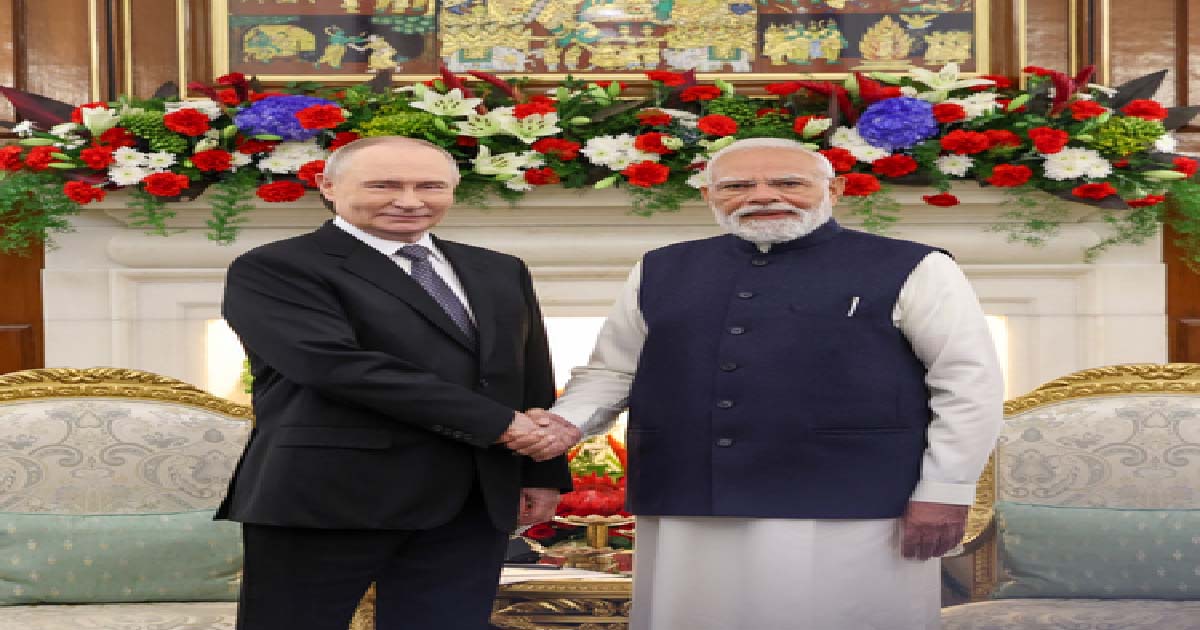
New Delhi, Dec 5: Hailing India-Russia ties, Prime Minister Narendra Modi on Friday said that the friendship between the two countries has remained like a pole star amidst the ups and downs faced by the world in the past 80 years.
While making a joint press statement with Russian President Vladimir Putin following their talks at the Hyderabad House in New Delhi on Friday, PM Modi said that the ties between two nations have stood the test of time and thanked Putin for his friendship and unwavering commitment to India while recalling the efforts made by the Russian leadership to elevate bilateral ties.
“Today, I am delighted to welcome President Putin to the 23rd India-Russia Summit today. His visit comes at a time when our bilateral relations are experiencing several historic milestones. 25 years back, President Putin laid the foundation for our strategic partnership. 15 years ago, in 2010, our partnership was granted the status of a Special Privileged Strategic Partnership. For the past two and a half decades, he (President Putin) has nurtured this relationship with his leadership and vision.
“His (President Putin) leadership, under all circumstances, has elevated our ties to new heights. I express my heartfelt gratitude to President Putin, my friend, for this deep friendship and unwavering commitment to India. The world has seen many ups and downs over the past eight decades. Humanity has faced many challenges and crises and amidst all this, the India-Russia friendship has remained like a pole star. This relationship, founded on mutual respect and deep trust, has always stood the test of time,” he added.
Recalling recent heinous terror attacks in both countries, PM Modi said that India and Russia have stood together in the fight against terrorism.
“Today we also discussed regional and global issues. India and Russia have long cooperated shoulder to shoulder in the fight against terrorism. Whether it’s the terrorist attack in Pahalgam or the cowardly attack on Crocus City Hall — the root of all these incidents is the same. India firmly believes that terrorism is a direct attack on the values of humanity and global unity against it (terrorism) is our greatest strength.”
PM Modi announced that India and Russia will cooperate to train Indian seafarers in polar waters. “We will now cooperate to train Indian seafarers in polar waters. This will not only strengthen our cooperation in the Arctic, but will also create new employment opportunities for India’s youth.”
Reiterating India’s stance on Ukraine conflict, he said, “India has advocated for peace in Ukraine from the very beginning. We welcome all efforts to find a peaceful and lasting solution to this issue. India has always been ready to contribute and will continue to do so.”
PM Modi also termed energy security as a strong and important pillar of India-Russia partnership. He stated that cooperation between India and Russia in civil nuclear energy has been crucial in realising shared clean energy priorities.
“Energy security has been a strong and important pillar of the India-Russia partnership. Our decades-old cooperation in civil nuclear energy has been crucial in realising our shared clean energy priorities. We will continue this win-win cooperation. Our cooperation in critical minerals is crucial to ensuring secure and diversified supply chains across the world,” stated PM Modi.
Earlier, taking the India-Russia Special and Privileged Partnership ahead, PM Modi warmly welcomed President Putin at the Hyderabad House to participate in the 23rd India-Russia Annual Summit.
With both countries sharing a longstanding and time-tested bond, the two leaders are holding comprehensive and detailed discussions aimed at further strengthening the bilateral relations.
International News
‘Govt follows protocol’: BJP respond after Rahul Gandhi remarks on Oppn-Putin meeting
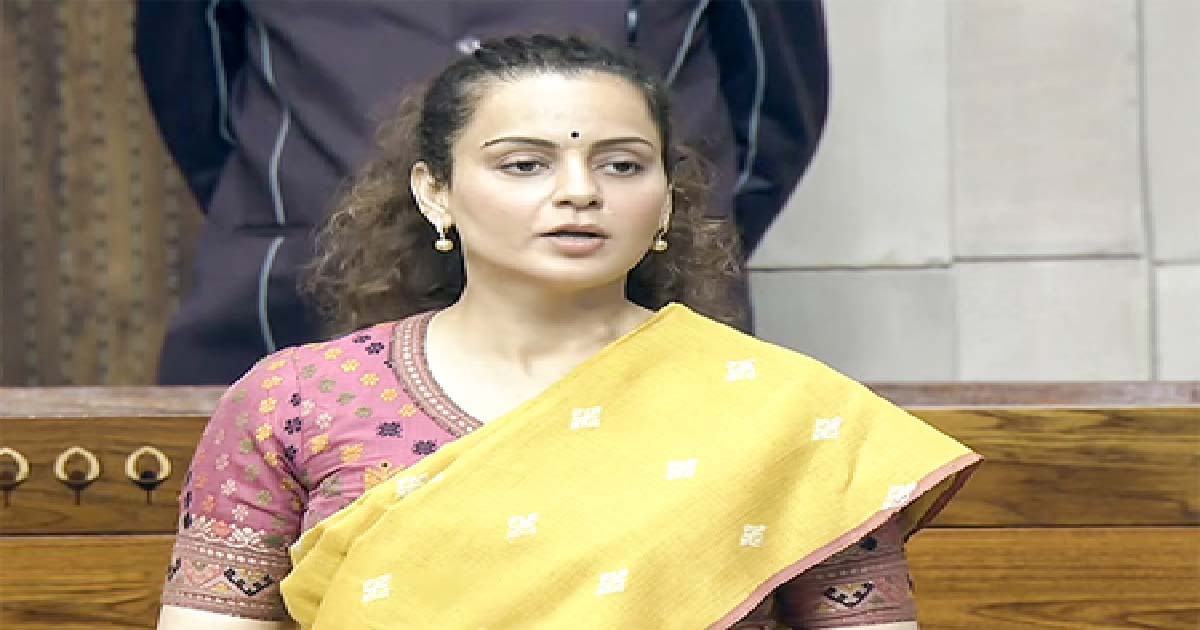
New Delhi, Dec 4: After Congress MP Rahul Gandhi alleged that the Centre has been advising foreign delegations against meeting or interacting with the Leader of the Opposition (LoP) – a practice he said was followed during previous UPA and NDA regimes, ruling party leaders on Thursday rejected the claim, asserting that the “government follows due protocol” in all matters.
The startling charge by Rahul Gandhi, while speaking to reporters outside Parliament, comes hours ahead of Russian President Vladimir Putin’s two-day visit to India. His remarks are set to raise eyebrows in the political corridors and also set the stage for heated sparring between the BJP and Congress.
Rahul Gandhi said, “Meetings with the LOP take place with delegations coming from outside. It has been a long-held tradition and has always been done this way,” he said, while citing instances during Manmohan Singh and Atal Bihari Vajpayee governments.”
Speaking to Media, BJP MP Kangana Ranaut said, “These decisions are made by the government. Atal ji was a national asset, and the entire country was proud of him. He was a great patriot. I don’t know why Rahul Gandhi is not being allowed, but in my opinion, his commitment to the nation is questionable. His role in creating unrest and trying to divide the country raises doubts about his intentions. And if Rahul Gandhi is comparing himself to Atal ji, then I would suggest he join the BJP — only then could he become like him.”
BJP MP Bhim Singh said, “Why would the government stop him? He only creates chaos and does not speak where he is supposed to speak.”
Echoing a similar stance, BJP MP Brij Lal added, “The government follows protocol, and work will be carried out accordingly. Rahul Gandhi is only making this political.”
JD(U) leader K. C. Tyagi clarified, “The government does not decide such protocols. Visiting heads of state themselves decide whom they wish to meet.”
Union Minister Ramdas Athawale added, “Foreign leaders visit on the invitation of the ruling party or government. If President Putin wishes, Rahul Gandhi, as LoP, can meet him. The government has no role in that.”
-

 Crime3 years ago
Crime3 years agoClass 10 student jumps to death in Jaipur
-

 Maharashtra1 year ago
Maharashtra1 year agoMumbai Local Train Update: Central Railway’s New Timetable Comes Into Effect; Check Full List Of Revised Timings & Stations
-
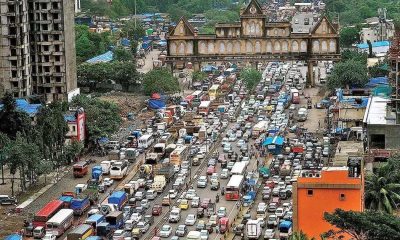
 Maharashtra1 year ago
Maharashtra1 year agoMumbai To Go Toll-Free Tonight! Maharashtra Govt Announces Complete Toll Waiver For Light Motor Vehicles At All 5 Entry Points Of City
-

 Maharashtra1 year ago
Maharashtra1 year agoFalse photo of Imtiaz Jaleel’s rally, exposing the fooling conspiracy
-
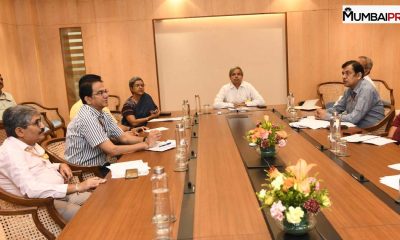
 National News1 year ago
National News1 year agoMinistry of Railways rolls out Special Drive 4.0 with focus on digitisation, cleanliness, inclusiveness and grievance redressal
-

 Maharashtra1 year ago
Maharashtra1 year agoMaharashtra Elections 2024: Mumbai Metro & BEST Services Extended Till Midnight On Voting Day
-

 National News1 year ago
National News1 year agoJ&K: 4 Jawans Killed, 28 Injured After Bus Carrying BSF Personnel For Poll Duty Falls Into Gorge In Budgam; Terrifying Visuals Surface
-

 Crime1 year ago
Crime1 year agoBaba Siddique Murder: Mumbai Police Unable To Get Lawrence Bishnoi Custody Due To Home Ministry Order, Says Report












